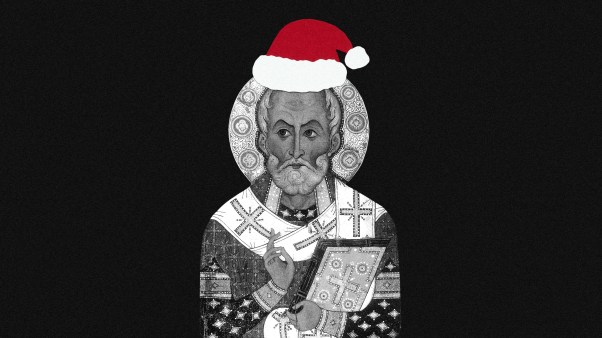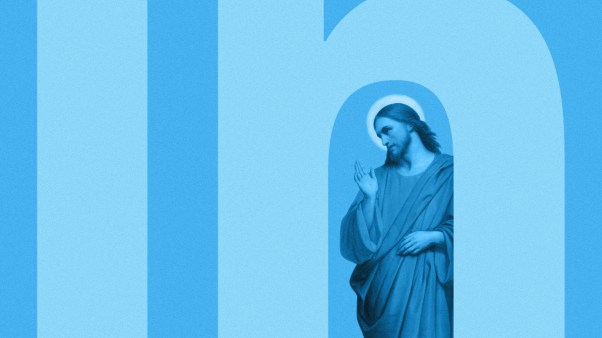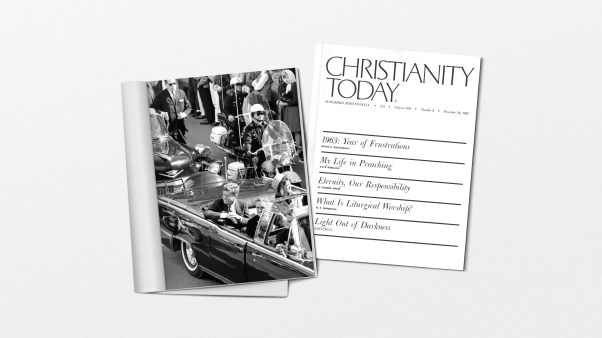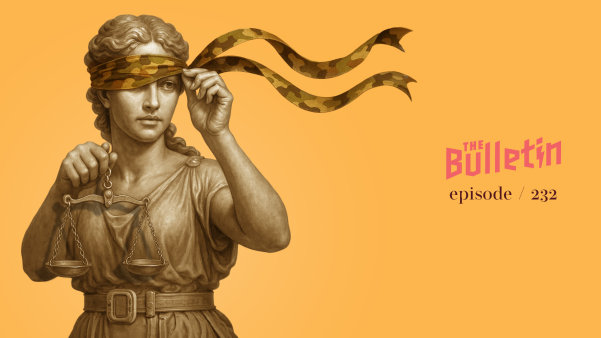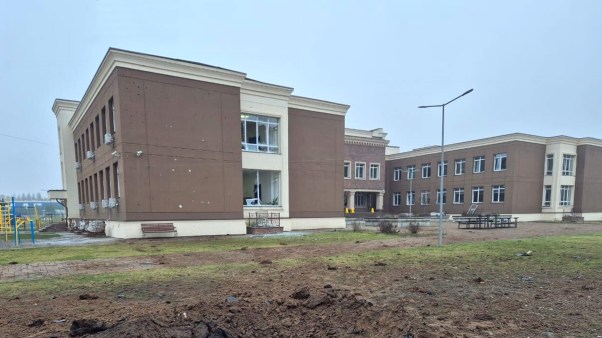Reiji Oyama, the translator of the Modern Japanese Bible and one of the founders of the Japan Evangelical Association, died on May 16 at the age of 96 in Tokyo.
He started translating the Bible in 1960, beginning with the letter to Philemon and moving on to publishing the entire New Testament in Japanese in 1978. In Japanese, it was known as Gendaijin no Seisho or “Bible for Modern Man.” But Oyama preferred using this English title: “The Understandable Bible.”
He believed most people don’t read the Bible because they think it is too difficult. The difficulty is not the Bible itself, though, but how it has been translated, Oyama said. He argued that most Japanese versions of Scripture strove for faithfulness to the biblical text but, unfortunately, disregarded cultural differences.
Oyama believed that it was important that the meaning of the biblical text, as revealed to its original audience, should be equally clear in the Japanese language. As a result, his translations were often paraphrases rather than word-for-word translations.
“My father showed me the honest, humble faith of a child every day,” his daughter Megumi Okano said at his funeral. “I can see the faith of a humble little child who accepts what is taught by the Bible and believes that it is true.”
Reiji Oyama was born in Tokyo on January 15, 1927. His father, Tōji, was a manager at the Mitsukoshi department store and later opened a used bookstore, while his mother, Ikuko, was a housewife. When World War II began, Oyama became a high school cadet in the Japanese Imperial Army Accounting Academy, which trained elite officers in college-level courses, martial arts, and horsemanship.
After the war, Oyama entered Waseda University and began learning English at a church’s Bible class. His Christian friend, US army sergeant Henry Ikemoto, persistently asked him to attend an evangelistic event called G.I. Gospel Hour. Oyama declined repeatedly until he ran out of excuses and decided to attend even though he felt unwell. That evening, he listened to Japanese preacher Ugo Nakata speak about the cross of Christ, and when he prayed for people there to be healed, Oyama felt his fever go away immediately. The 19-year-old gave his life to Christ on November 30, 1946.
“When I came to know that I was a sinner, I was convinced that all my sins had been forgiven by the Lord,” he later said.
When Waseda University began having classes on Sundays due to a classroom shortage, Oyama decided to start holding Bible studies on campus so that believers could still worship God on Sundays. These meetings became the Christian Student Association (Kirisutosha Gakusei Kai or KGK), which is part of the International Fellowship of Evangelical Students (IFES) today. Oyama’s evangelistic efforts during this time led to the baptism of seven people–including the woman who would later become his wife, Michiko Hirayama. Subsequently, he also led his parents to the Lord.
Upon graduation, Oyama felt called to become a pastor during a personal devotion one morning. He decided to study at Tokyo Christian Theological Seminary and founded the Takadanobaba Bible Church, now known as the Biblical Church of Tokyo (Seisho Kirisuto Kyokai), in 1953.
“His life was anchored in that church which he founded as a young man, [where he preached] the gospel in street-side meetings after the war, and which he served throughout his life,” wrote Lausanne Movement’s honorary chairman Doug Birdsall in a tribute.
Making Jesus’ name known to the Japanese people was Oyama’s top priority. His children realized this too. “He was a person who lived by the words of Matthew 6:33 and put God first,” said Okano in her eulogy.
“My father was very loyal to God and was a hard worker. When I was little, I thought that my father was working hard for God and I shouldn’t get in his way. So, even though I was rarely taken out to play somewhere, I had no complaints.”
Oyama’s commitment to spreading the gospel in Japan also took the form of multiple Bible translations of Scripture that often paraphrased the original Hebrew and Greek texts. Translations of the entire Bible were published in 1983 and 1988.
He sought to translate from “the believer’s point of view” because God’s salvation is revealed through the Bible, wrote Doron B. Cohen, lecturer of Japanese Christian history at Doshisha University in Kyoto. In Psalm 23, for example, Oyama used “his heart” instead of “his name’s sake” in verse 3. There is no mention of rod or staff in verse 4, and “full cup” turns into “full breast.” God is portrayed as a senshi or warrior in the same verse. For the angel’s message to Mary in Luke 1:35 (“The Holy Spirit will come on you”), Oyama rendered it as "The high God will create life in you” in Japanese.
Not everyone appreciated his creative approach to translating the Word.
Oyama took “dynamic equivalence to an ‘extreme’ by giving priority to the supposed message at the expense of the literal meaning of the original text,” wrote Cohen. The Japanese translation of Luke 1:35, meanwhile, “could be used against the pre-existence and incarnation of Christ!” said Baptist College of Ministry professor John R. Himes.
Today, his Modern Japanese Bible translation (Gendaiyaku Seisho) is ranked 44th on Amazon’s list of Japanese Christian Bibles. “It’s easy to understand… and extremely easy to read,” one reviewer commented. “I think it's a Bible that is easy to apply to devotions and preparation for messages,” wrote another reviewer.
Oyama’s pastoral heart was not bound solely to producing Japanese translations of Scripture for believers. He authored more than a hundred books, including theological discussions on the truth about Christianity and what happens after death, as well as commentaries on most books of the Bible. He also established the Tokyo Graduate School of Theology in 1969 to train up new pastors and church leaders.
Then, something happened in 1956 that would set him on a decades-long journey of post-war reconciliation. “While I was reading Matthew 5:23-24…the Lord showed me I was to start a movement to apologize for our sins,” Oyama recounted. “I know during the over one hundred years of its modern history Japan has trampled on the people of Asia, leaving them with bitter enmity towards the Japanese people.”
His first trip outside of Japan was to the Philippines. “I am sending you to go and wash the feet of the Filipino people… and to attempt a reconciliation by the Love of God,” Oyama felt the Lord say to him. There, Oyama held four months of evangelistic meetings and was “the first Japanese missionary to come to the Philippines since World War II,” CT reported in 1959.
Oyama also recognized the devastating impacts of Japan colonizing Korea from 1910 to 1945. One event in particular stood out to him: when Japanese soldiers attacked the men of a Korean village in retaliation for participating in anti-Japanese demonstrations on April 15, 1919. The soldiers herded the villagers into the Cheamni Church, shot them, and set the church on fire.
The Japanese pastor decided to raise funds to rebuild the church after it was burned down, and collected 10 million yen (about $70,000) from Japanese Christians to support its restoration. When a ceremony was held to commence the rebuilding efforts in 1959, however, victims of the 1919 massacre protested the use of Japanese money and only relented when they heard that the project would include the construction of a museum to commemorate the lives lost.
On the 100th anniversary of the massacre in 2019, Oyama returned to Cheamni Church. Along with 16 other Japanese Christians, he bowed on the floor of the church and apologized for the incident.
“Lord, this church is where the worst case was committed by Japanese officials during the colonial period,” he prayed. “Japanese politicians, however, have never apologized for this. It’s natural to apologize if you do something wrong. Lord, please forgive us, Japanese people.”
Oyama continued to seek opportunities for reconciliation after helping to set up the Japanese Evangelical Association in 1968. The seeds of this alliance were planted a year earlier during a Billy Graham International Convention in Tokyo attended by 200,000 Japanese people.
At a global missions conference in Tokyo in 2010, he publicly apologized for Japan’s colonization of other Asian countries such as Mongolia, Taiwan, and China. “Japan repeatedly killed, murdered, stole, robbed, raped – just humiliated her neighbors,” he said. “Therefore, as a Japanese, I really want to express my feelings of repentance.”
“He went to all the places that the Japanese imperial army had gone to make amends for the atrocities the army had carried out,” said his daughter-in-law Kathy Oyama.
In his twilight years, Oyama embarked on another evangelistic pursuit: YouTuber. His channel, “Lunrun Grandpa,” (or “happy old man” in Japanese) launched when he was 93 years old and has close to 9,000 subscribers.
Oyama was “always trying to be cutting-edge,” said Kathy. “He was one of the first preachers to start Christian radio in Japan. He was doing broadcasts in the middle of the night. They were so good that people would stay up for it.”
Some of the 120 videos on Oyama’s YouTube channel focused on practical subjects such as choosing a spouse and how to deal with anger and anxiety. His most-watched video with 80,000 views is a two-minute-long clip in which Oyama shared encouraging words to people who were feeling hopeless and despondent.
The bulk of his video content, however, examined matters of the Christian faith in his characteristically gentle demeanor. Topics ranged from explaining what “born again” means and his time spent pioneering evangelism in Japan. He didn’t shy away from commenting on suicide and sex from a pastoral perspective, either.
On May 16, Oyama met with staff from Tokyo Graduate School of Theology, the school he founded, and visitors from an American seminary to discuss partnering together on a Doctor of Ministry (DMin) program. While having lunch together, he closed his eyes, gave a small smile, and passed away. The official cause of death was aspiration. “It seemed like the time he was allotted [on earth] happened to end in that moment,” Kathy said. “I imagine he was at this restaurant, closed his eyes to blink, and woke up in heaven. He was living a full life of service literally until the very end.”
Oyama was preceded in death by his wife, Michiko, and leaves behind five children, 11 grandchildren, and 7 great-grandchildren.




